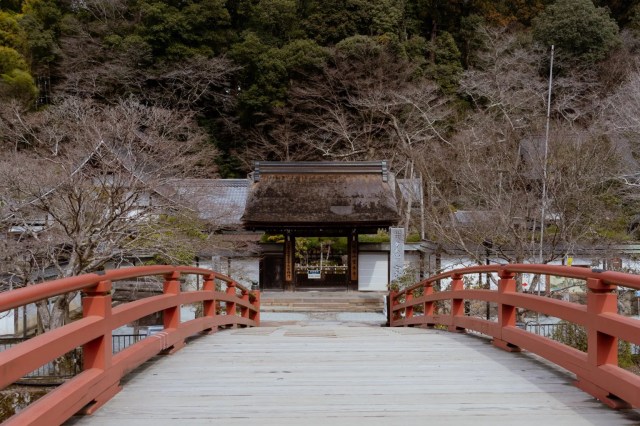
Murouji has a fascinating history, with stunning sights that’ll linger in your heart long after you visit.
Most tourists who visit Nara head straight for the world-famous giant buddha and free-roaming deer at Nara Park, but those wanting to escape the crowds and explore off the beaten path will find beautiful gems on the Nara Yamato Four-Temple Pilgrimage.
The four ancient temples — Murouji, Hasedera, Abe Monjuin, and Oka-dera — are all located in Nara’s Yamato region, and each one has a long and fabled history stretching back to the days when Nara Prefecture was known as Yamato Province, the birthplace of imperial rule.
One of the most impressive temples is Murouji, which goes by both “Muro-ji” and “Murouji” in English by official sources. Located around 90 minutes by train from Nara Park, our reporter Egawa Tasuku was able to visit recently on a press tour organised by Central Japan Railway Company (JR Tokai), and he says it’s one of the most beautiful sites he’s ever seen.
The pilgrimage temples are currently growing in popularity after being featured in Hikaru Kimi e, the current year-long historical taiga drama series depicting the life of Murasaki Shikibu, the Japanese female poet and novelist who wrote The Tale of Genji, one of the world’s first novels.
Murouji’s history is particularly important for women, as it was one of the few religious sites to accept women as pilgrims back when it was frowned upon. In fact, it still goes by the name “Nyonin Koya“, or “Mt Koya for Women“, given that prior to 1872 women were banned from entering Mt Koya, home to the ecclesiastical headquarters of the local sect of Shingon Buddhism, to avoid leading male monks astray.
Today, Murouji Temple is the head temple of the Murouji sect of the Shingon Buddhism, and it’s home to a number of National Treasures and Important Cultural Properties.
▼ One of the National Treasures is Kon-do Hall, which was built in the mid-9th century.
As one of the oldest structures at Murouji, this building has a very dignified and impressive facade, but when viewed from the side, the fascinating shape of the roof reveals itself. This building was constructed in the yosemune-zukuri style, where the roof features a technique called Kokera-buki, a construction method that involves layering wood shingles on top of each other.
The Hall houses another National Treasure, The Standing Statue of Chuson Shaka Nyorai (“釈迦如来立像”), a 234.8-centimetre (92.4-inch) tall wooden Buddha that dates back to the early Heian Period (794-1185). The figure is surrounded by eight other Buddhist statues, all of which are Important Cultural Properties, with the main two being Bodhisattva Yakushi and Bodhisattva Monju (also dated to the Heian Period), and six of the Wooden Standing 12 Guardians, which are approximately a metre high and date back to the Kamakura Period (1185-1333). Each guardian displays a Chinese zodiac animal on their head, with this Hall enshrining the guardians of Rat (“子”), Ox (“丑”), Horse (“午”), Monkey (“申”), Dog (“戌”) and Boar (“亥”).
▼ Photography is prohibited inside the hall, but this sign shows you the setup of the display.
If you’re at an ancient temple like this one, keep an eye out for these types of signs — if they display the words “写真” (“shashin”) or “撮影” (“satsuei”), which can be used together or interchangeably to mean “photography” or “photograph”, alongside the kanji character “断”, from “okotowari” which means “refuse”, you’ll know it means photography is prohibited.
There are exceptions to the no-photography rule at this temple from time to time, though, because for a limited time from 30 March to 6 May, the temple will be allowing smartphone photography inside the hall, only for those who participate in the “Special Visit” event.
Opportunities to photograph Buddha statues of National Treasure status are rare, so temple lovers will definitely want to visit during the Golden Week holidays, which end on 6 May this year. Egawa was given permission to photograph some of the usually off-limits displays as part of the press tour, but he held back on publishing some photos in order to keep it a surprise for those who do visit. However, he couldn’t resist sharing one image of an incredibly special National Treasure, located behind The Standing Statue of Chuson Shaka Nyorai.
▼ This is the Taishakuten (Shakra) Mandala, a rare wall painting and valuable relic, believed to have been painted on this wooden board around the middle of the 9th Century.
Hidden behind the Buddhist figures, this is like a secret national treasure that’s almost invisible from the front so Egawa highly recommends searching for it when you visit.
▼ Incidentally, when Egawa stopped by, the roof of the Hall was covered with protective sheeting as it needs to be reroofed.
The temple is currently seeking donations to reroof the building and also improve the temple grounds and preserve the environment. While people can make donations at the temple, there’s also a crowdfunding campaign in place to raise funds, and it’s already reached 83-percent of its 10 million-yen (US$64,000) target goal, with around a month remaining.
It’s heartening to see the temple has the support of so many people behind it, especially when there are so many historically important sites on the grounds, including the Main Hall, a National Treasure that dates back to 1308.
This Hall houses the Statue of Nyoirin Kannon Bosatsu, an Important Cultural Property that dates from the Heian Period, which is one of the three greatest Nyoirin Kannon statues in Japan.
▼ This is an amazing Buddha statue carved from a single piece of Kaya wood.
Another important structure is the Five-storied Pagoda, a National Treasure that’s said to be the smallest outdoor pagoda of its kind in Japan.
Pretty soon, the pagoda will look even more majestic when the temple’s famous rhododendrons come into bloom, around the end of April to the beginning of May.
▼ Miroku-do Hall, an Important Cultural Property, is another beautiful sight worth seeing on the grounds.
▼ While you’re in the area, the nearby Ryuketsu Shrine is also a must-see, as it enshrines a dragon deity and is even older than Murouji.
▼ The main shrine here was relocated from Nara’s famous Kasuga Taisha Shrine in 1672.
Murouji is a beautiful historic site with even more to see and do than Egawa was able to mention, and he reckons you could happily spend half a day here immersing yourself in the history of the temple and exploring its many amazing artefacts.
So next time you’re visiting Nara, and bowing to its famous giant Buddha and deer, why not take a detour off the beaten path to discover the beauty of the road less travelled at Murouji? It’s a stunning site that’ll linger in your mind and heart long after your visit, much like a night at this historic Nara hotel, whose visitors have included emperors, Einstein and Audrey Hepburn.
Temple information
Murouji / 室生寺
Address: Nara-ken, Uda-shi, Murou 78
奈良県宇陀市室生78
Website
Related: Murouji, Nara JR Central
Screenshot: Murouji
Photos © SoraNews24
● Want to hear about SoraNews24’s latest articles as soon as they’re published? Follow us on Facebook and Twitter!
[ Read in Japanese ]

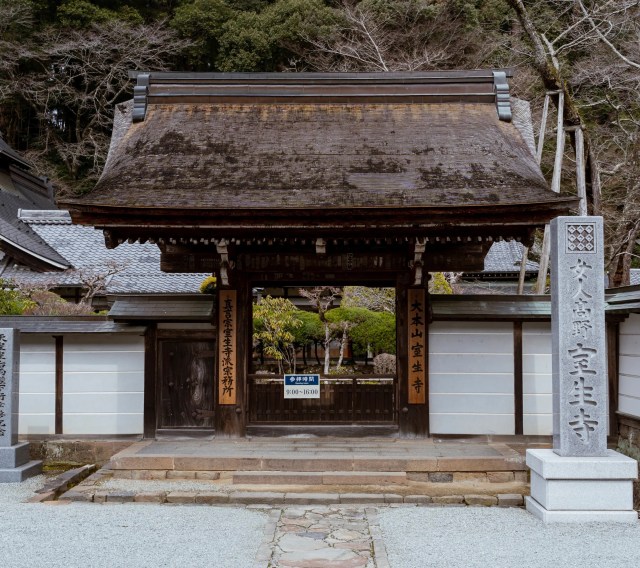
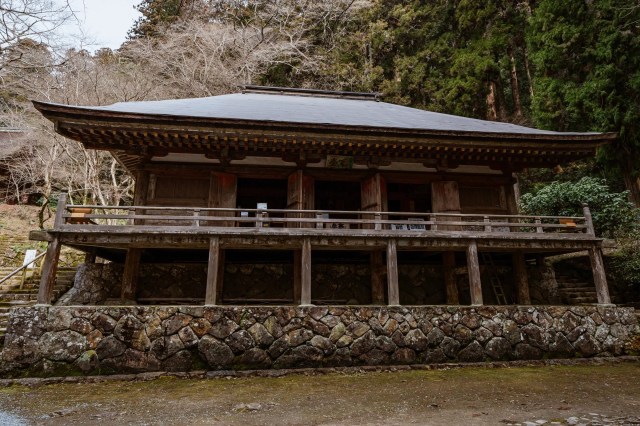
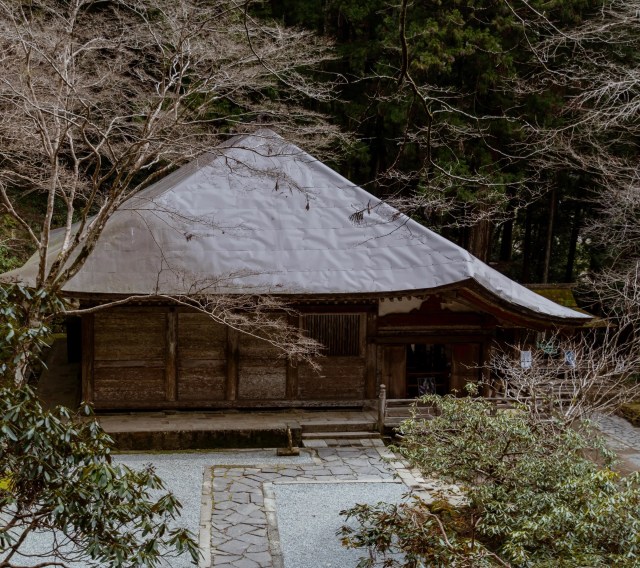
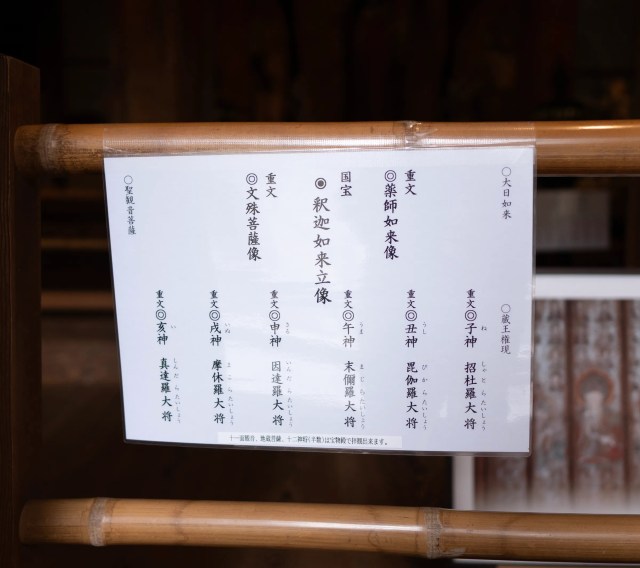
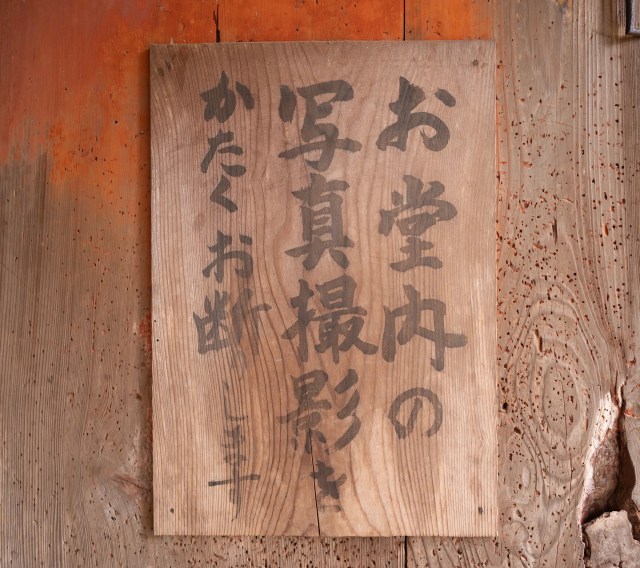
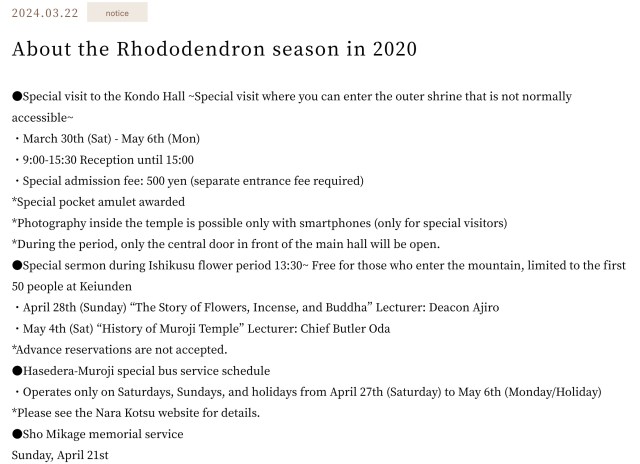
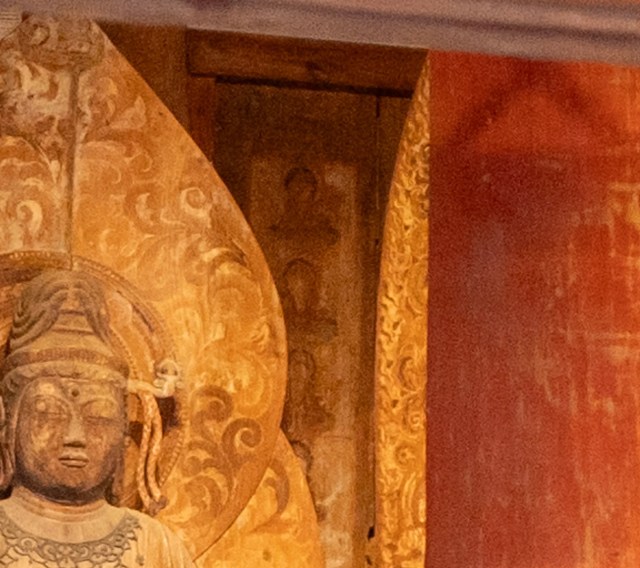
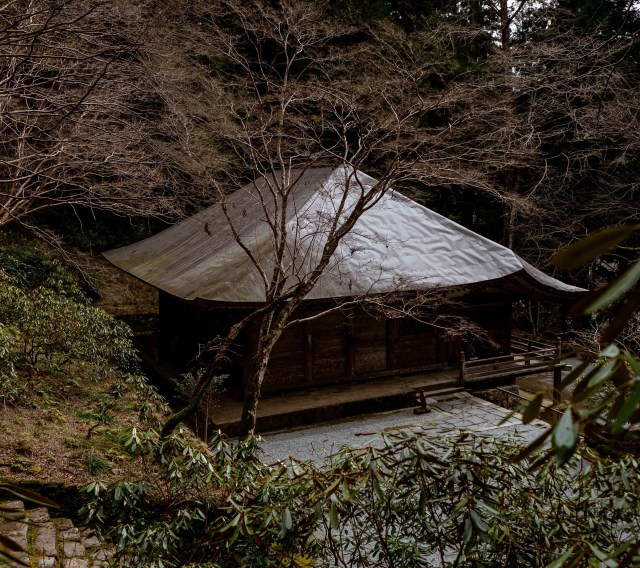
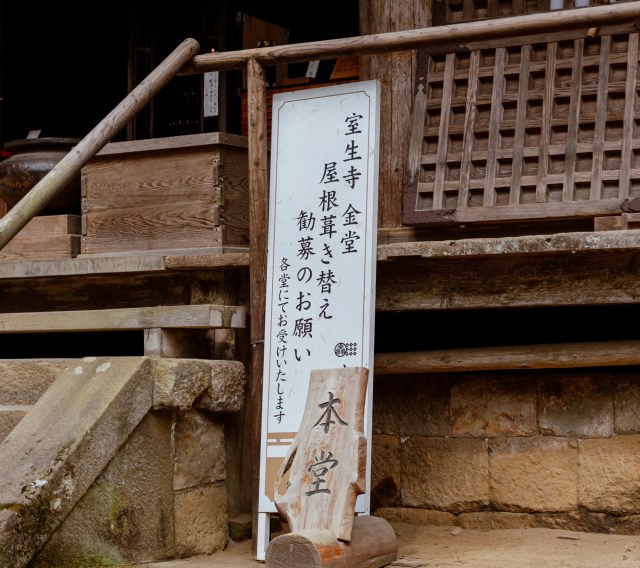
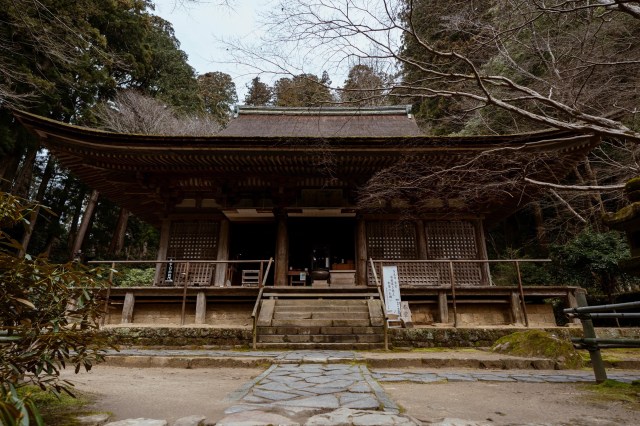
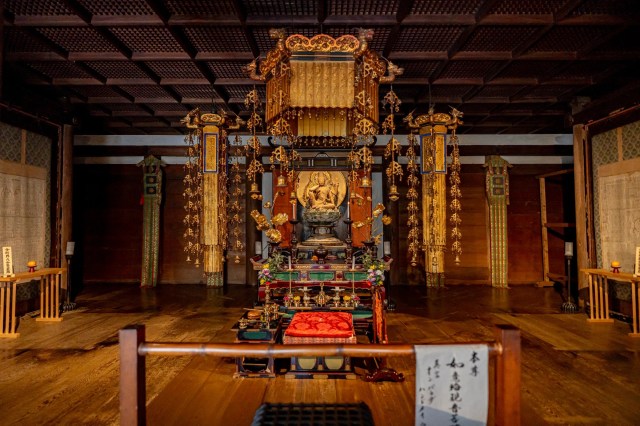
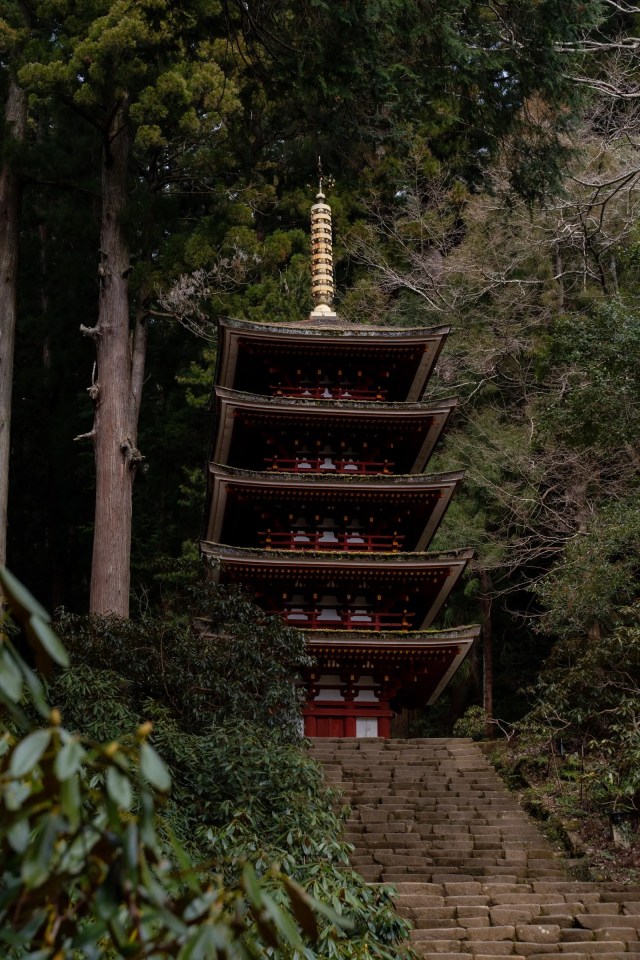
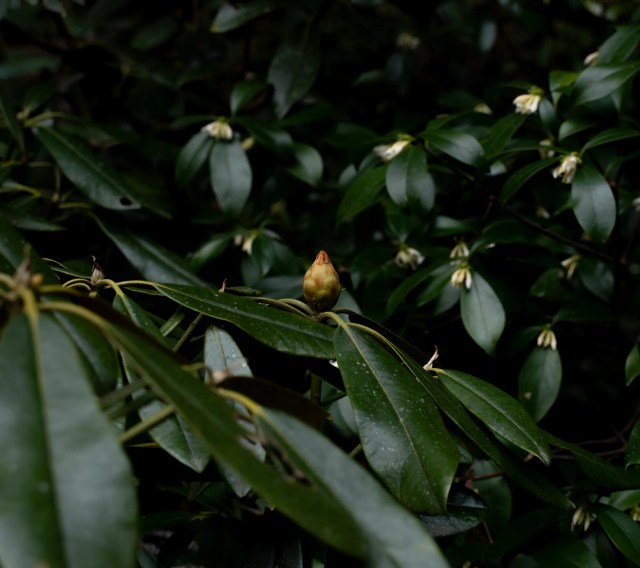
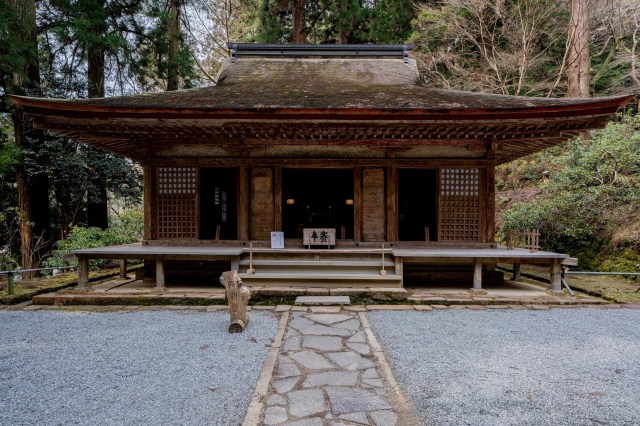
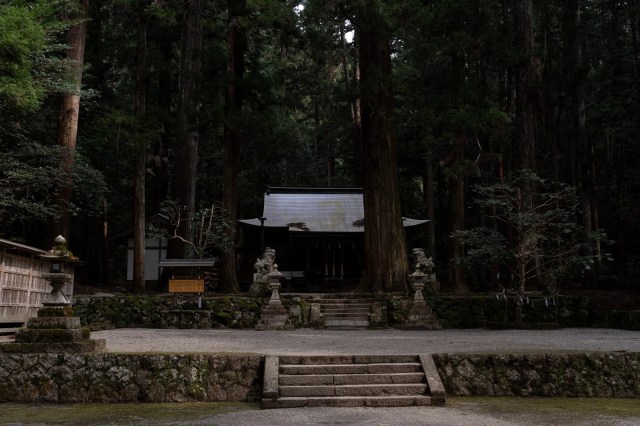
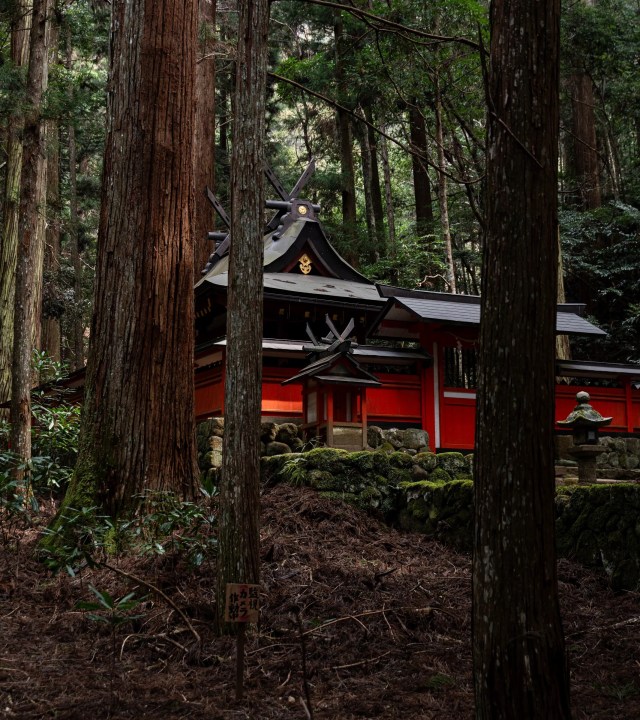
 A visit to the ordinarily forbidden hall of Nara’s Hasedera Temple【Photos】
A visit to the ordinarily forbidden hall of Nara’s Hasedera Temple【Photos】 Miss school field trips? Now adults can go on a “school trip” too with new plan at Nara hotel
Miss school field trips? Now adults can go on a “school trip” too with new plan at Nara hotel This little-known temple in rural Japan has a giant Buddha bigger than Kamakura’s or Nara’s【Pics】
This little-known temple in rural Japan has a giant Buddha bigger than Kamakura’s or Nara’s【Pics】 Dress like an aristocrat from the Nara period at new costume rental shop in Nara【Photos】
Dress like an aristocrat from the Nara period at new costume rental shop in Nara【Photos】 Afro Buddha, usually only displayed one day a year, gets rare extended viewing until mid-October
Afro Buddha, usually only displayed one day a year, gets rare extended viewing until mid-October Practical Zelda Tears of the Kingdom merch is here to be Hyrule-helpful in your daily life【Pics】
Practical Zelda Tears of the Kingdom merch is here to be Hyrule-helpful in your daily life【Pics】 Starbucks releases an official green tea chai latte with special Japanese ingredients
Starbucks releases an official green tea chai latte with special Japanese ingredients Kyoto study finds nearly 500 translation errors for foreign tourists, new guidelines released
Kyoto study finds nearly 500 translation errors for foreign tourists, new guidelines released Ultra-cheap, convenient Tokyo hotel is a great place to stay…if you pay extra for earplugs
Ultra-cheap, convenient Tokyo hotel is a great place to stay…if you pay extra for earplugs Awesome Japanese sandals give you the footprints of a cat or T-rex
Awesome Japanese sandals give you the footprints of a cat or T-rex Tokyo’s beckoning cat temple asks foreign tourists to stop writing on the beckoning cats they buy
Tokyo’s beckoning cat temple asks foreign tourists to stop writing on the beckoning cats they buy Krispy Kreme Japan unveils new doughnuts filled with…cheese?
Krispy Kreme Japan unveils new doughnuts filled with…cheese? Japan’s video rental giant now rents wigs, so we tried them out【Photos】
Japan’s video rental giant now rents wigs, so we tried them out【Photos】 We check out Otaru’s real-life locales that inspired scenes in hit anime Golden Kamuy
We check out Otaru’s real-life locales that inspired scenes in hit anime Golden Kamuy Starbucks releases special matcha Frappuccino made with Japan’s first matcha leaves of the year
Starbucks releases special matcha Frappuccino made with Japan’s first matcha leaves of the year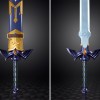 Life-size vibrating Legend of Zelda Master Sword for sale from Nintendo【Photos】
Life-size vibrating Legend of Zelda Master Sword for sale from Nintendo【Photos】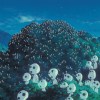 Yes, our new smartphone looks like at least two Studio Ghibli anime characters, Sharp says
Yes, our new smartphone looks like at least two Studio Ghibli anime characters, Sharp says 2nd line of Casio watch rings hits Japanese capsule machines and we got the secret one!
2nd line of Casio watch rings hits Japanese capsule machines and we got the secret one! Japanese man tells friend to wear suit to wedding party, so he comes as Mobile Suit Gundam
Japanese man tells friend to wear suit to wedding party, so he comes as Mobile Suit Gundam Mt. Fuji-blocking screen installed as response to bad tourist manners to be in place by next week
Mt. Fuji-blocking screen installed as response to bad tourist manners to be in place by next week Studio Ghibli releases new mug and tumbler collection featuring Jiji and Totoro
Studio Ghibli releases new mug and tumbler collection featuring Jiji and Totoro Cool capsule toys recreate how Japan navigated trains in pre-smartphone days【Photos】
Cool capsule toys recreate how Japan navigated trains in pre-smartphone days【Photos】 Fried Pokémon: Tokyo restaurant serves up an unusual dish【Taste Test】
Fried Pokémon: Tokyo restaurant serves up an unusual dish【Taste Test】 McDonald’s new Happy Meals offer up cute and practical Sanrio lifestyle goods
McDonald’s new Happy Meals offer up cute and practical Sanrio lifestyle goods Foreigner’s request for help in Tokyo makes us sad for the state of society
Foreigner’s request for help in Tokyo makes us sad for the state of society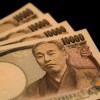 New Tokyo restaurant charges higher prices to foreign tourists than Japanese locals
New Tokyo restaurant charges higher prices to foreign tourists than Japanese locals “Mt. Fuji convenience store” issues apology for bad tourist manners, adds multilingual signs
“Mt. Fuji convenience store” issues apology for bad tourist manners, adds multilingual signs Tokyo’s famous Lost in Translation hotel is closed
Tokyo’s famous Lost in Translation hotel is closed Japanese ramen restaurants under pressure from new yen banknotes
Japanese ramen restaurants under pressure from new yen banknotes Bad tourist manners at Mt Fuji Lawson photo spot prompts Japanese town to block view with screens
Bad tourist manners at Mt Fuji Lawson photo spot prompts Japanese town to block view with screens Sales of Japan’s most convenient train ticket/shopping payment cards suspended indefinitely
Sales of Japan’s most convenient train ticket/shopping payment cards suspended indefinitely Sold-out Studio Ghibli desktop humidifiers are back so Totoro can help you through the dry season
Sold-out Studio Ghibli desktop humidifiers are back so Totoro can help you through the dry season Japanese government to make first change to romanization spelling rules since the 1950s
Japanese government to make first change to romanization spelling rules since the 1950s Ghibli founders Toshio Suzuki and Hayao Miyazaki contribute to Japanese whisky Totoro label design
Ghibli founders Toshio Suzuki and Hayao Miyazaki contribute to Japanese whisky Totoro label design Tokyo’s most famous Starbucks is closed
Tokyo’s most famous Starbucks is closed Doraemon found buried at sea as scene from 1993 anime becomes real life【Photos】
Doraemon found buried at sea as scene from 1993 anime becomes real life【Photos】 One Piece characters’ nationalities revealed, but fans have mixed opinions
One Piece characters’ nationalities revealed, but fans have mixed opinions We asked a Uniqlo employee what four things we should buy and their suggestions didn’t disappoint
We asked a Uniqlo employee what four things we should buy and their suggestions didn’t disappoint Shocking cat graffiti at centuries-old Japanese temple is shockingly uncute【Video】
Shocking cat graffiti at centuries-old Japanese temple is shockingly uncute【Video】 A visit to Japan’s centuries-old boob temple
A visit to Japan’s centuries-old boob temple How big (small?) is the smallest Great Buddha statue in Japan? Let’s visit and find out【Photos】
How big (small?) is the smallest Great Buddha statue in Japan? Let’s visit and find out【Photos】 Earn points by visiting temples throughout Japan with Buddhist sect’s upcoming app
Earn points by visiting temples throughout Japan with Buddhist sect’s upcoming app Japan’s 30 best travel destinations, as chosen by overseas visitors
Japan’s 30 best travel destinations, as chosen by overseas visitors Giant Buddhist pagoda and Kannon statue in Fukuoka Prefecture look like a theme park
Giant Buddhist pagoda and Kannon statue in Fukuoka Prefecture look like a theme park Nara Park’s first baby deer of the year has been born, is totally adorable【Video】
Nara Park’s first baby deer of the year has been born, is totally adorable【Video】 TripAdvisor Japan announces the country’s 10 favorite shrines and temples
TripAdvisor Japan announces the country’s 10 favorite shrines and temples Green tea ice cream from Nara combines everything we love about the city into one cute dessert
Green tea ice cream from Nara combines everything we love about the city into one cute dessert Nara hotel with hot spring baths by imperial palace site is a reason to remember the prefecture
Nara hotel with hot spring baths by imperial palace site is a reason to remember the prefecture Real Buddhist monk shows off hot (and sweet) EDM dance moves in Mount Koya video
Real Buddhist monk shows off hot (and sweet) EDM dance moves in Mount Koya video Demon-slaying Dojigiri, one of Japan’s Five Swords Under Heaven, now on display at Kasuga Shrine
Demon-slaying Dojigiri, one of Japan’s Five Swords Under Heaven, now on display at Kasuga Shrine Travel around Japan with stunning videos from the 4K ultra HD video library
Travel around Japan with stunning videos from the 4K ultra HD video library Enormous Buddhist Kannon statue in Sendai shocks visitors with otherworldly looming
Enormous Buddhist Kannon statue in Sendai shocks visitors with otherworldly looming Refresh your mind, body, and soul at Temple Camp Daitaiji, the first temple to open to campers
Refresh your mind, body, and soul at Temple Camp Daitaiji, the first temple to open to campers
Leave a Reply